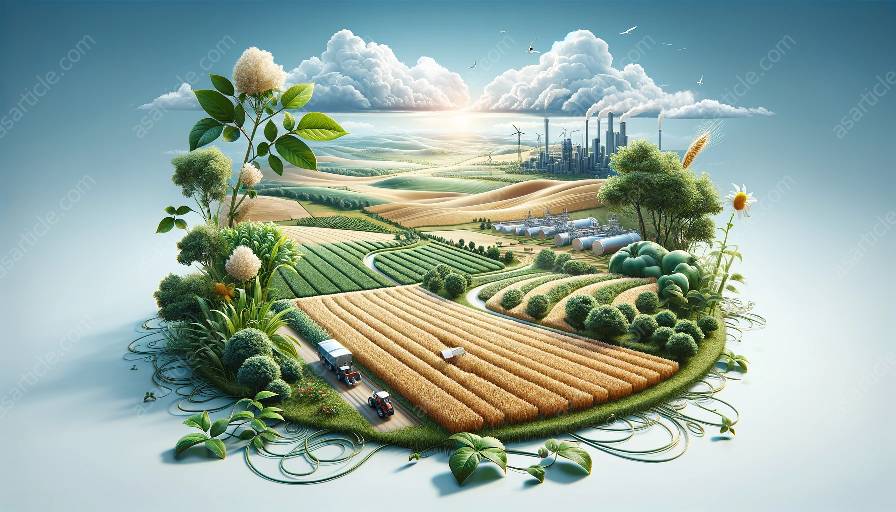Agricultural products have always been central to the global economy, and the pricing of these products has a significant impact on a wide range of industries. Understanding the factors that influence the pricing of agricultural products is crucial for those involved in agricultural marketing and agribusiness. Additionally, it is important to consider the science behind agricultural production and its impact on pricing.
Factors Influencing Agricultural Product Pricing
The pricing of agricultural products is influenced by a multitude of factors, including supply and demand dynamics, production costs, market trends, government policies, and international trade regulations. These factors interact in complex ways, leading to fluctuations in agricultural product prices.
Supply and Demand Dynamics: The fundamental economic principle of supply and demand plays a critical role in determining the prices of agricultural products. When the supply of a particular agricultural product exceeds demand, prices tend to decrease, whereas a shortage of supply relative to demand leads to price increases.
Production Costs: The cost of producing agricultural products, including expenses related to labor, equipment, and inputs such as fertilizers and pesticides, directly impacts pricing. Higher production costs often lead to higher prices for agricultural products.
Market Trends: Consumer preferences, dietary trends, and changes in food habits can influence the demand for agricultural products, consequently affecting their prices. For example, the growing popularity of organic and non-GMO products has led to price premiums for these types of agricultural products.
Government Policies: Agricultural product pricing is often influenced by government policies such as subsidies, tariffs, import/export regulations, and price supports. These policies can have a significant impact on the competitiveness of agricultural products in the global market.
International Trade Regulations: Trade agreements, tariffs, and trade restrictions imposed by different countries can affect the pricing of agricultural products. Access to international markets and the ability to compete globally can impact the prices at which agricultural products are bought and sold.
Role of Agricultural Marketing and Agribusiness
Within the context of agricultural marketing and agribusiness, understanding the pricing of agricultural products is essential for making informed decisions about production, distribution, and market positioning. Agricultural marketing involves the processes and strategies used to bring agricultural products from the farm to the consumer, while agribusiness encompasses the various businesses and activities involved in agricultural production and distribution.
Agricultural marketing professionals work to identify consumer needs and preferences, develop pricing strategies, and create value-added products that can command premium prices in the market. Factors such as branding, packaging, and distribution channels also play a crucial role in the pricing and positioning of agricultural products within the market.
Agribusiness professionals, including farmers, agronomists, food processors, distributors, and retailers, must consider the cost structures, market demand, and competitive landscape when determining the pricing strategy for agricultural products. Additionally, supply chain management, risk assessment, and innovations in technology all contribute to the effective pricing of agricultural products within the sphere of agribusiness.
Connection to Agricultural Sciences
A deep understanding of agricultural sciences, including crop and soil science, animal husbandry, and agricultural technology, is integral to comprehending the factors that influence the pricing of agricultural products. The application of scientific principles and practices in agricultural production directly impacts the quality, quantity, and cost of agricultural products.
Advancements in agricultural sciences, such as the development of drought-resistant crops, precision agriculture technologies, and sustainable farming practices, can influence the cost of production, thereby affecting the pricing of agricultural products. Biotechnological innovations, genetic modifications, and improvements in crop management techniques all contribute to the dynamic nature of agricultural product pricing.
Moreover, interdisciplinary research in agricultural sciences provides insights into the environmental, ecological, and socio-economic implications of agricultural production, which in turn play a role in shaping the prices of agricultural products in the market.
Conclusion
The pricing of agricultural products is a multifaceted and dynamic aspect of the agricultural industry. It is informed by supply and demand dynamics, production costs, market trends, government policies, international trade regulations, agricultural marketing strategies, agribusiness practices, and advancements in agricultural sciences. By understanding these interconnected factors, stakeholders in the agricultural sector can make informed decisions that contribute to a more sustainable and profitable agricultural industry.

